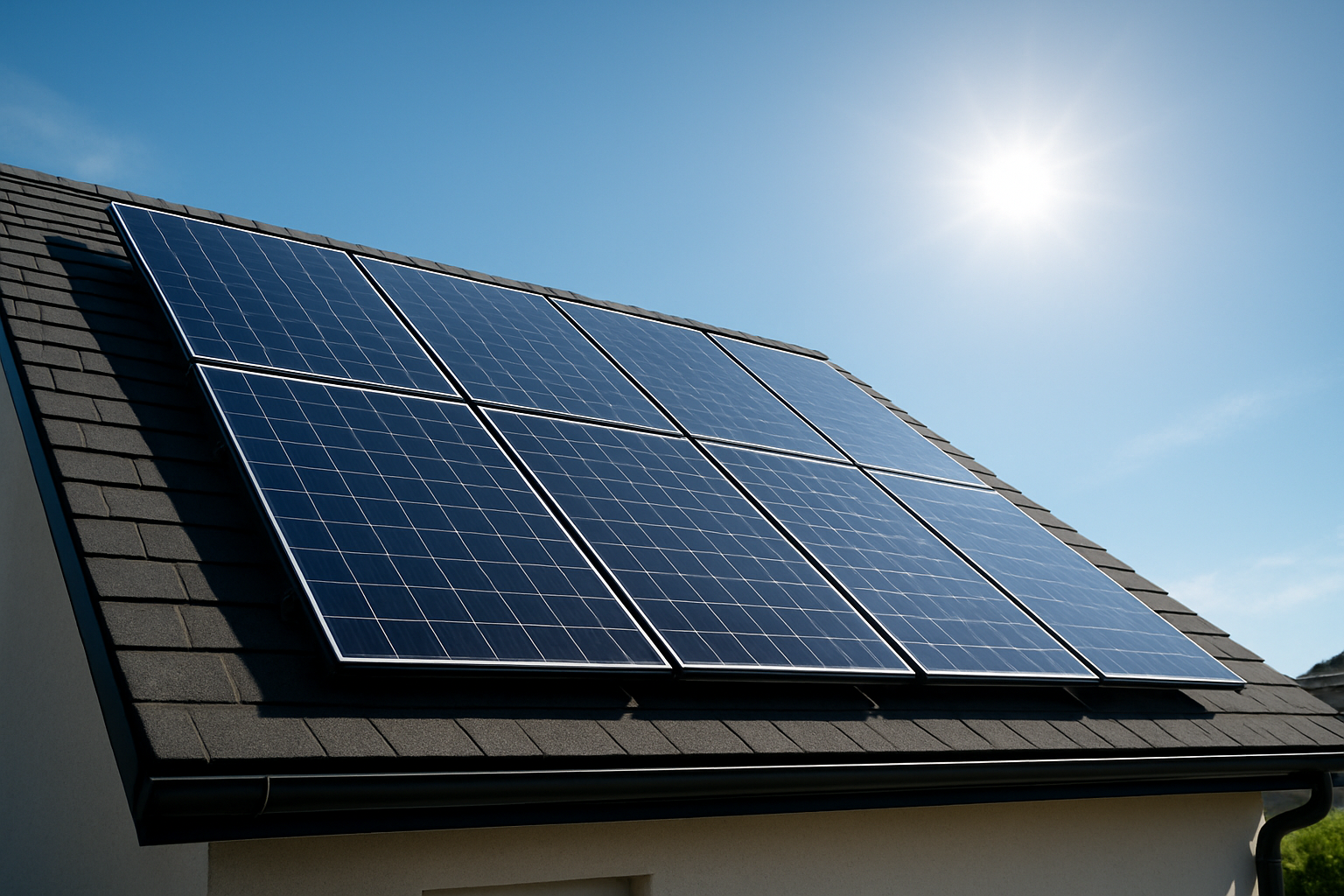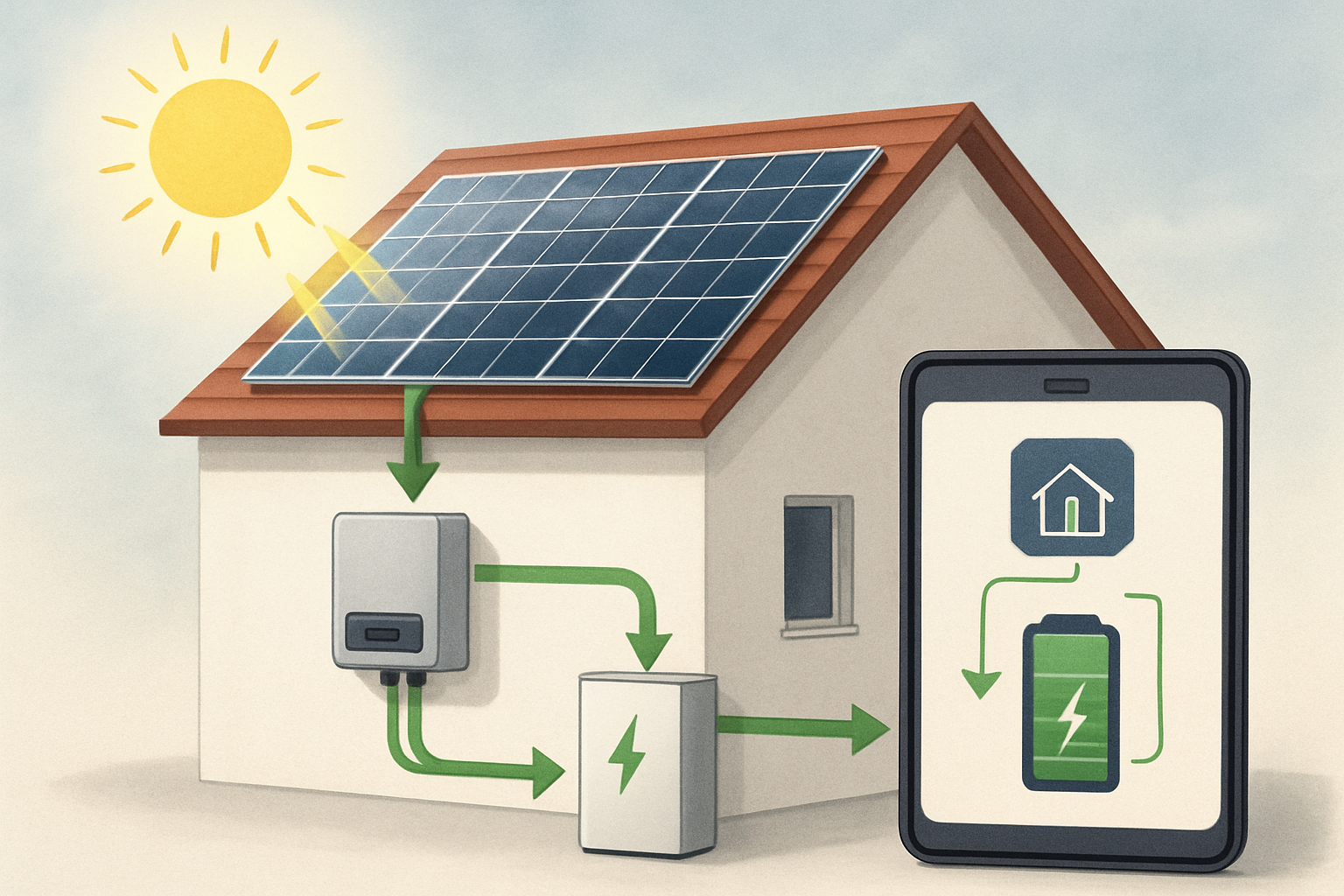Solar energy offers a powerful path to energy independence and a sustainable future. Many people invest in solar systems expecting consistent, high performance. However, several factors can subtly undermine a solar system's efficiency, leading to reduced energy output and slower returns on investment. These issues are often overlooked, even by experienced installers. Understanding these potential pitfalls allows you to ensure your solar system delivers its best.
Our experience in the solar and energy storage industry, particularly with lithium batteries, integrated energy storage systems (ESS), and high-performance solar inverters, shows that reliable and scalable energy solutions stem from meticulous attention to detail at every stage. We focus on empowering customers to achieve true energy independence. Let's examine seven common factors that can diminish solar efficiency.
The Silent Threat of Shading
Shading is perhaps the most recognized solar efficiency killer, yet its full impact is often underestimated. Even a small amount of shade on a single solar cell can significantly reduce the output of an entire panel, a phenomenon sometimes referred to as the “Christmas light effect” because cells are typically connected in series. This means a shaded cell limits the current flow for the whole string of panels.
-
Partial Shading Impact
Obstructions like trees, chimneys, or adjacent buildings can cast shadows that move throughout the day. Light shading (less than 20% of the panel covered) can lead to 15–25% energy loss. Moderate shading (20–40% coverage) might result in 25–40% energy loss, while heavy shading (more than 40% coverage) could cause a drastic 40–95% reduction in output. This loss occurs because shaded cells become resistive, leading to localized heating, known as 'hot spots', which can damage the panel over time.
-
Mitigation Strategies
Careful site assessment before installation is crucial to identify and minimize potential shading. Bypass diodes, integrated into modern solar panels, help electricity flow around shaded cells, limiting their impact. Technologies like micro-inverters or power optimizers can further enhance performance by allowing each panel to operate independently, preventing a single shaded panel from dragging down the entire array. However, some studies suggest that conventional string inverters paired with shade-tolerant modules can offer comparable annual yields for moderate shading.
Installation Precision: Wiring and Orientation Matters
A solar system's long-term performance heavily relies on the quality of its installation. Overlooking seemingly minor details during setup can lead to substantial efficiency losses.
-
Improper Wiring and Connections
Faulty wiring, loose connections, or using an inadequate wire gauge can create resistance, leading to voltage drops and energy loss. These issues not only reduce the amount of electricity reaching your inverter and, subsequently, your home or storage system but can also pose safety risks like fire hazards. The wires from the PV array to the charge controller should be sized to ensure less than 2% of the generated energy is lost as heat in the wire.
-
Incorrect Panel Orientation and Tilt
Panels must be oriented and tilted precisely to capture the maximum amount of sunlight throughout the day and year. Incorrect angling or sub-optimal placement can significantly decrease the panels' ability to absorb light, reducing efficiency. A professional installer considers factors like latitude, seasonal sun paths, and local weather patterns to determine the ideal angles for your specific location.
Panel Health: Degradation and PID
Solar panels are built to last, but they are not immune to the effects of time and environmental stress.
-
Natural Degradation
All solar panels experience a gradual decrease in power output over their lifespan, known as natural degradation. The median solar panel degradation rate is around 0.5% per year, meaning a panel will produce about 0.5% less energy each subsequent year. The National Renewable Energy Laboratory (NREL) found that solar panels manufactured after 2000 typically degrade at an annual rate of 0.8%, with a median of 0.6%. High-quality panels often come with warranties guaranteeing a certain output (e.g., 80% of original capacity) after 20-25 years.
-
Potential Induced Degradation (PID)
PID is a phenomenon where voltage leakage from the solar cells to the grounded module frame causes a loss of efficiency. This is particularly prevalent in high humidity or high-temperature environments. PID can significantly reduce a panel's performance. Proper system grounding during installation and the use of inverters with 'PID recovery' functions can help mitigate this issue.
The Heat Factor: Temperature's Role in Performance
While solar panels need sunlight, they do not perform better in extreme heat. In fact, high temperatures can negatively impact their efficiency.
-
Overheating Panels
Solar panel efficiency decreases as their temperature rises above a standard test condition of 25°C (77°F). This is quantified by the 'temperature coefficient' (Pmax), which typically ranges from -0.3% to -0.5% per degree Celsius. For example, if a panel has a temperature coefficient of -0.4% per °C, its power output will decrease by 0.4% for every degree Celsius above 25°C. On a hot day, panel temperatures can reach 50-65°C, potentially leading to a 10-15% decrease in power output compared to their rated efficiency.
-
Inadequate Ventilation
Poor ventilation beneath solar panels can trap heat, causing them to operate at higher temperatures than necessary. Panels typically operate 20-40°C higher than the ambient air temperature. Ensuring adequate airflow around the modules helps dissipate this heat, maintaining cooler operating temperatures and thus higher efficiency. Installation methods that allow for proper air circulation are key.

Surface Obstructions: Soiling and Dust
The accumulation of dirt and debris on the surface of solar panels is a common, yet often underestimated, cause of energy loss.
-
Accumulation of Dust, Pollen, Debris
Soiling refers to the buildup of materials like mineral dust, pollen, bird droppings, and industrial emissions on the light-collecting surfaces. These layers block or scatter sunlight, preventing it from reaching the photovoltaic cells. Soiling losses vary significantly by region. In areas with frequent rain, average losses can be below one percent. However, in arid or dusty climates, annual losses can reach 5% or more, with peak losses potentially exceeding 15%. Globally, the estimated annual power loss due to soiling is 3-10%.
-
Impact of Bird Droppings and Tree Sap
Localized obstructions, such as bird droppings or tree sap, can cause disproportionately large losses. Even small, opaque spots create concentrated shading, leading to the 'hot spot' phenomenon and efficiency reduction across the affected panel. Regular cleaning is a straightforward and effective way to mitigate these losses. For instance, an NREL model found that for a system with 1.9% annual soiling, one annual cleaning could maintain loss around 1.5%, while three cleanings could reduce it to 1.2%.
System Harmony: Component Mismatch
A solar system is an integrated network of components. If these components are not perfectly matched or configured, overall performance can suffer.
-
Inverter Sizing
The solar inverter is a critical component, converting the DC electricity from panels into usable AC electricity. Incorrect sizing of the inverter (either undersized or oversized) can lead to efficiency losses. An undersized inverter might 'clip' peak power production, while an oversized one might operate less efficiently at lower power levels. Our advanced solar inverters are designed to maximize energy conversion and integrate seamlessly with various system configurations.
-
Panel Mismatch
Even panels from the same manufacturer can have slight variations in their electrical characteristics. When connected in a string, the lowest-performing panel can limit the output of the entire string, akin to the slowest runner in a relay race. This 'mismatch effect' can cause 2-5% energy loss in new, unshaded arrays, with further losses accumulating over time. Some estimates suggest power mismatch can cause 5-25% power loss in a typical installation. Our integrated ESS solutions are designed to work harmoniously, optimizing power flow and minimizing losses from such variations.
Neglecting the Long Game: Maintenance and Monitoring
Once installed, a solar system benefits greatly from ongoing attention. Neglecting regular checks can allow small issues to escalate into significant efficiency drains.
-
Lack of Regular Cleaning and Inspection
Beyond cleaning for soiling, regular physical inspections are vital. This includes checking for loose connections, damaged wiring, or signs of pest activity that could compromise system integrity. Proactive maintenance helps prevent minor problems from becoming major performance inhibitors.
-
Absence of Performance Monitoring
Real-time monitoring systems provide invaluable data on energy production, system efficiency, and component health. They enable you to quickly detect issues like panel degradation, inverter malfunctions, or wiring problems that might otherwise go unnoticed for extended periods. Many monitoring systems offer alerts and historical data, allowing you to track performance over time and ensure your system operates at its peak. Our energy storage solutions often include advanced monitoring capabilities, giving you peace of mind and control over your energy assets.
Achieving Optimal Solar Performance
Maximizing solar system efficiency involves more than just installing panels. It demands careful planning, precise installation, selection of high-quality components, and ongoing attention to potential issues. By proactively addressing factors like shading, installation quality, panel degradation, temperature effects, soiling, component mismatch, and ensuring robust monitoring and maintenance, you can unlock the full potential of your solar investment.
Our commitment to providing reliable and scalable energy solutions, from advanced lithium batteries to comprehensive off-grid systems, aims to support your journey towards lasting energy independence. Understanding these common efficiency killers empowers you to make informed decisions, ensuring your solar system performs reliably for years to come.





Leave a comment
All comments are moderated before being published.
This site is protected by hCaptcha and the hCaptcha Privacy Policy and Terms of Service apply.